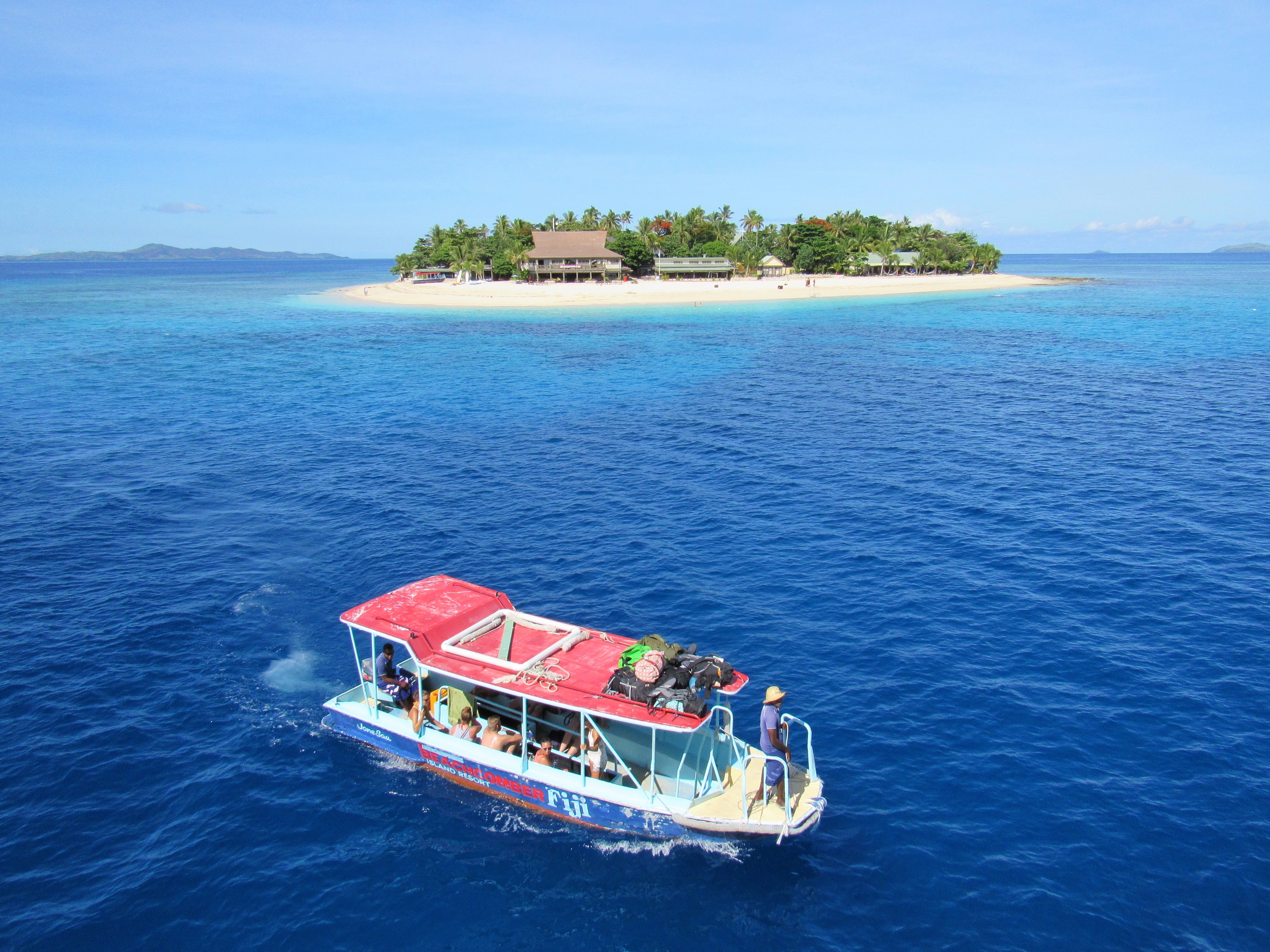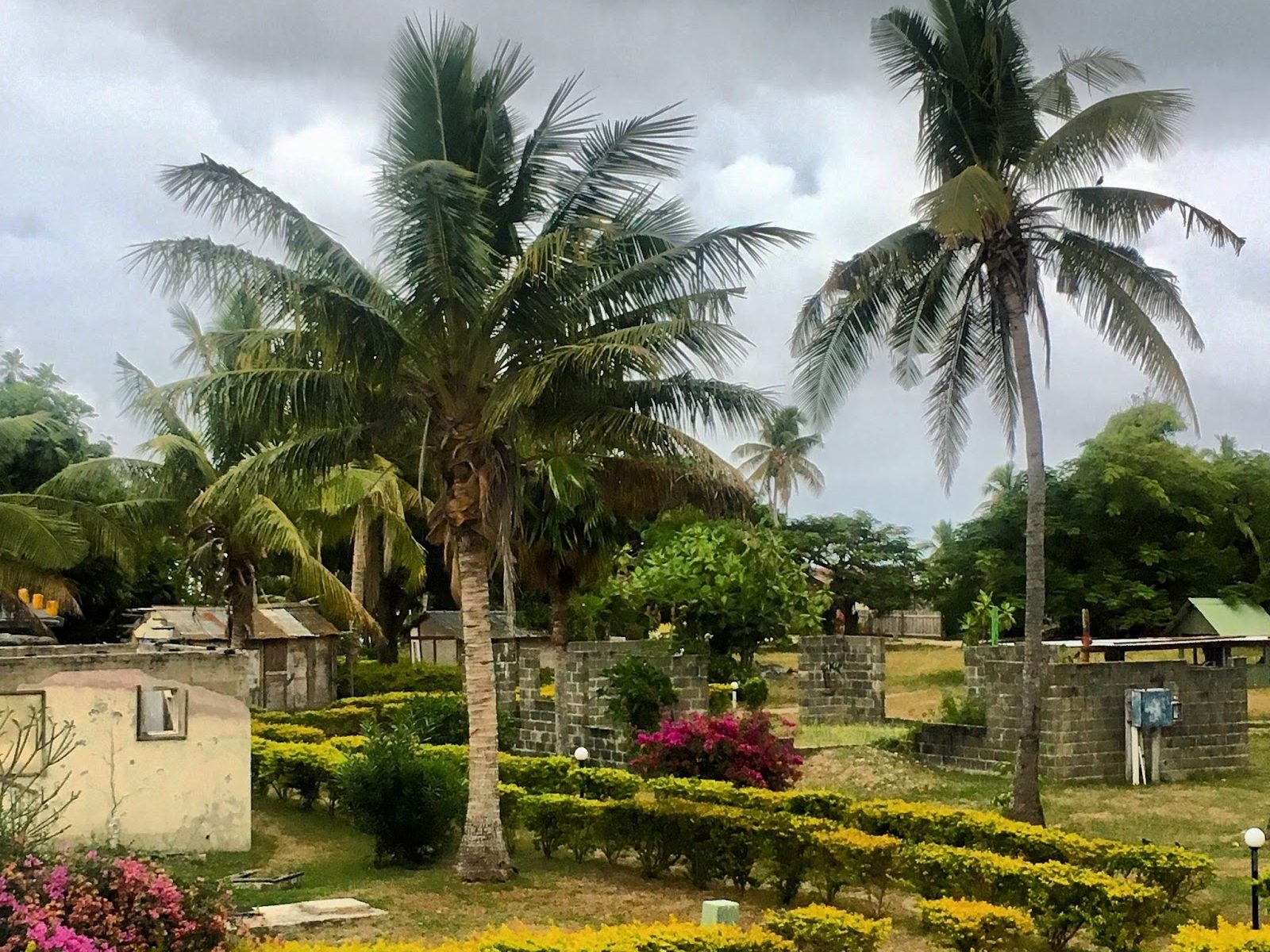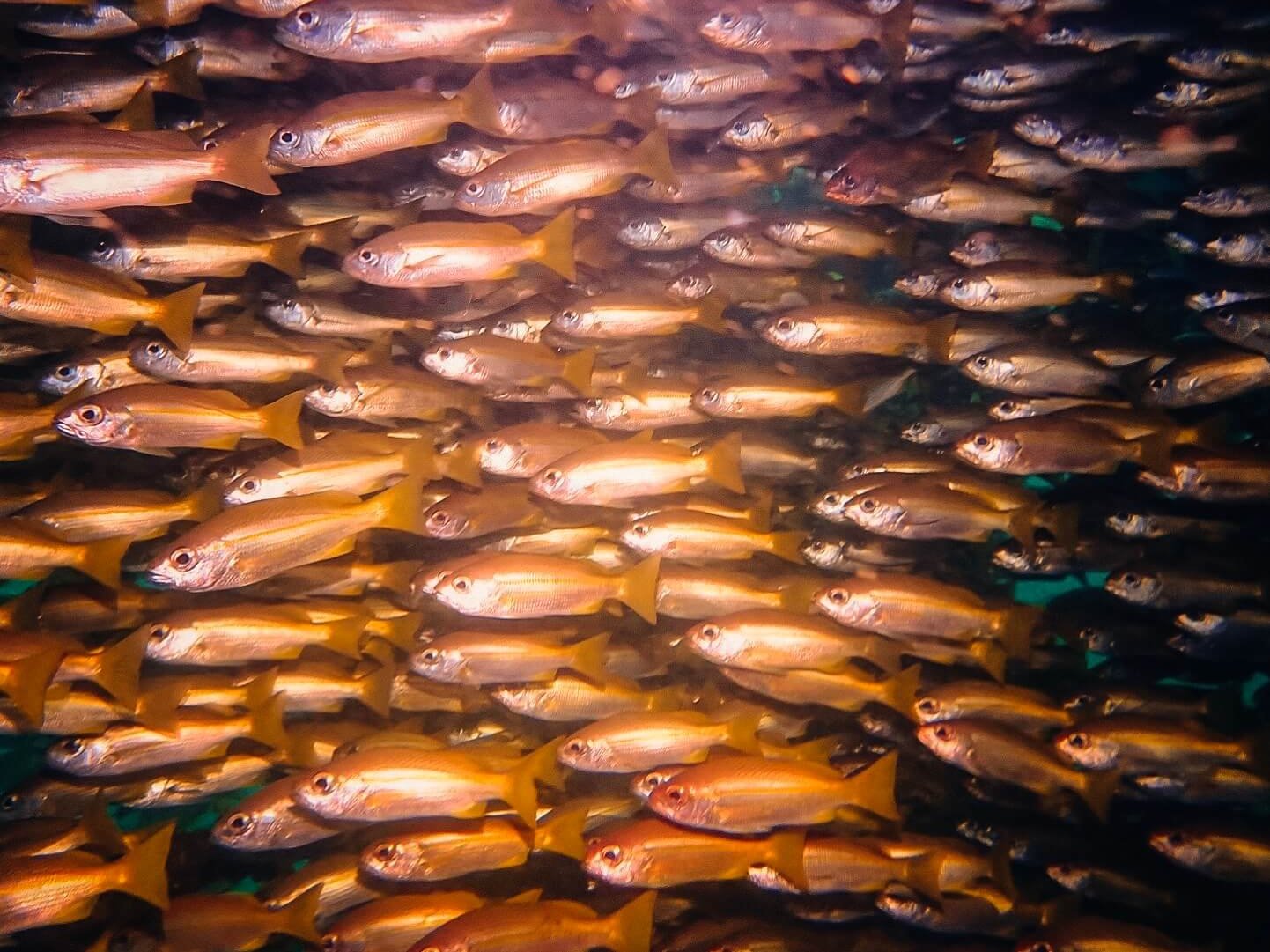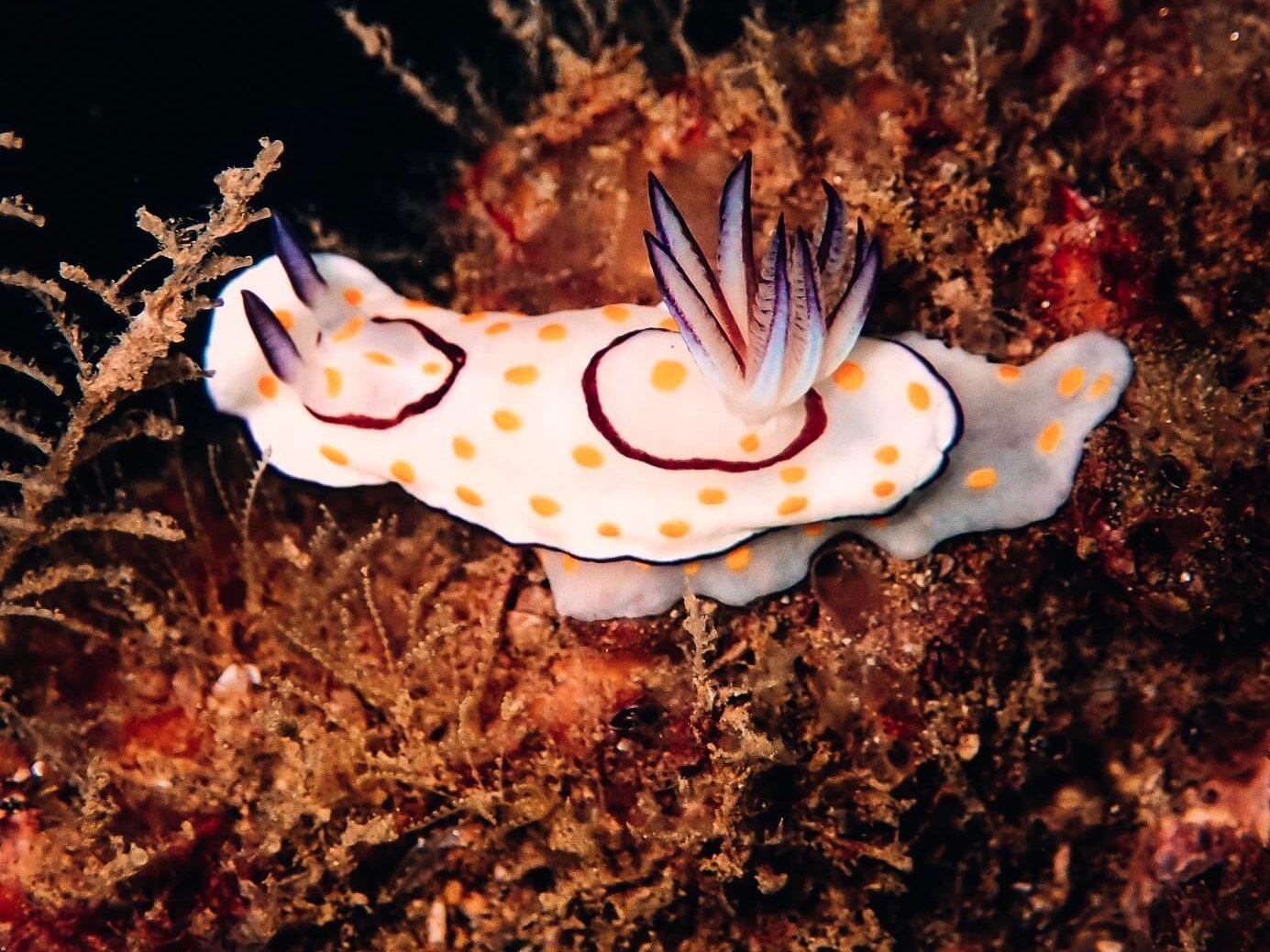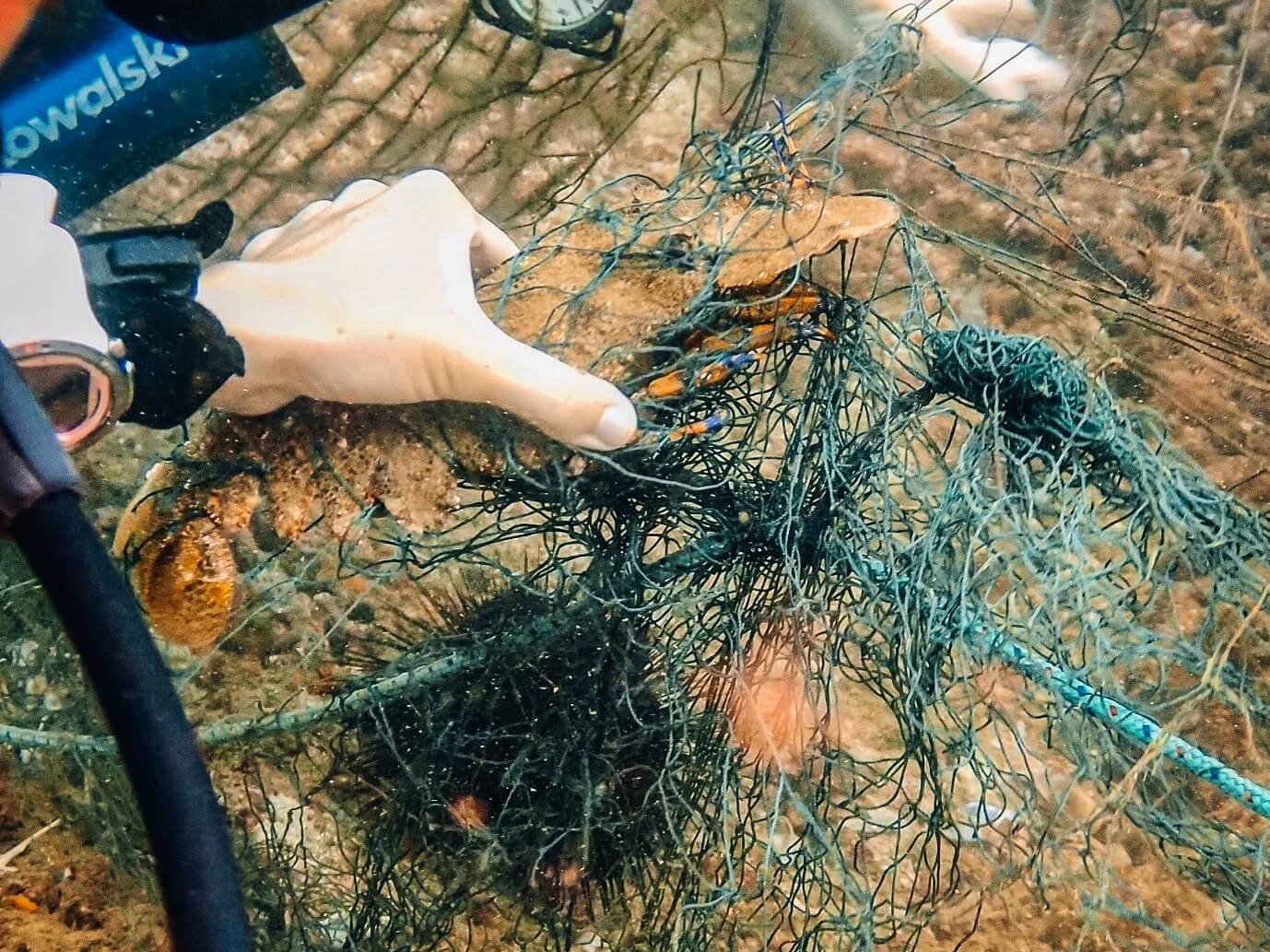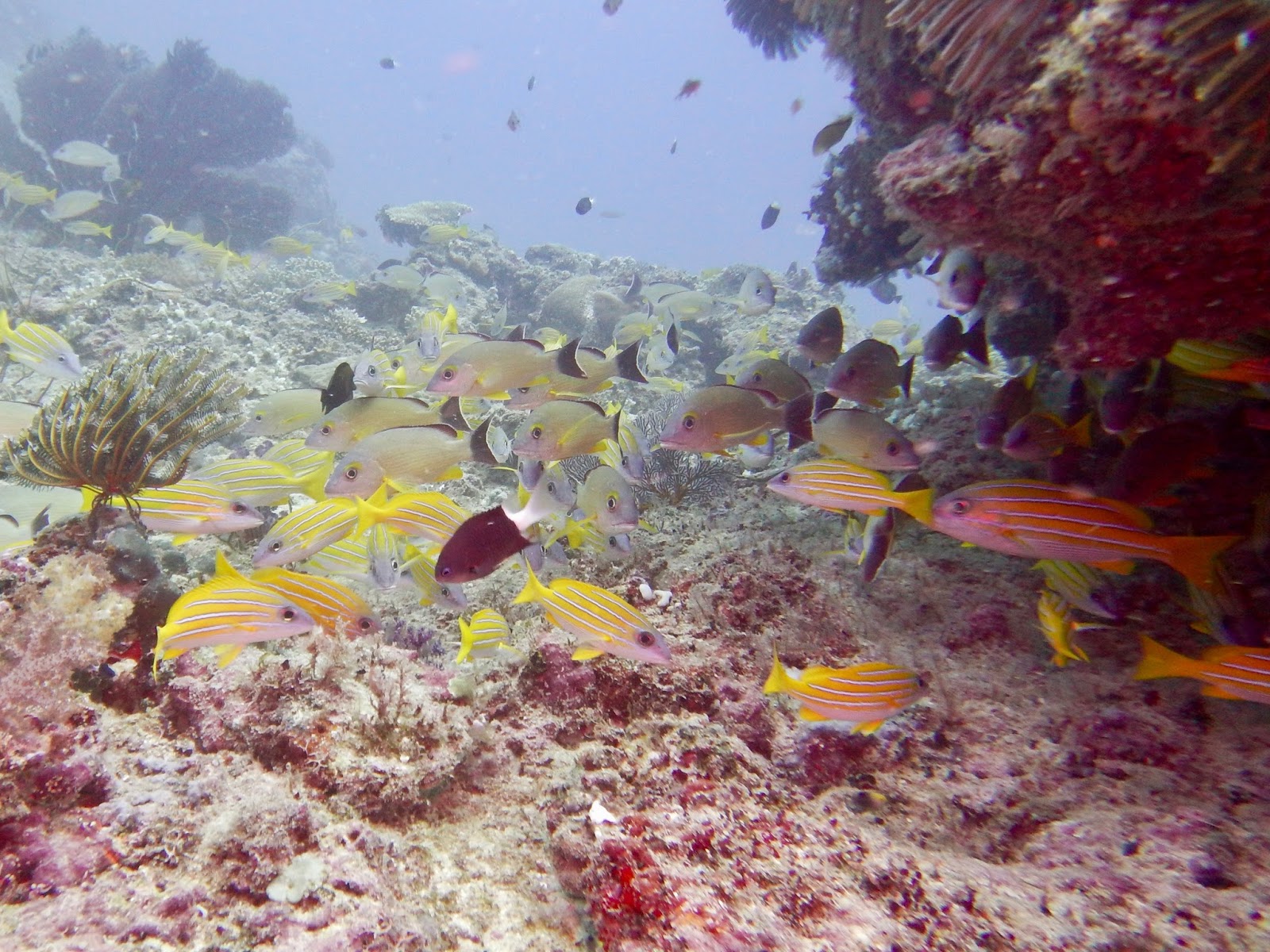
My favorite dive site around the Mana Island area of Fiji is a spot called Gotham City. On a tame day, it is teaming with ocean life. On the best of days, it’s a journey into another world, where you would think a rainbow exploded underwater there is so much color. The schools of fish are so thick that at times, you almost wish you could part the curtain to see what’s behind.
Gotham City is comprised of two pinnacles, with a channel between. The site is a 45 minute boat ride away, and out in the middle of nowhere, with no mooring line. We are blessed here with the best boat captain I have ever had the pleasure of working with. The man is a local Fijian, and a human compass and GPS all rolled into one. His eye is beyond human. When I first came to Mana Island, I went out on a dive with Fletch to learn the site, and Fletch asked Simi, our boat captain, to drop him on the southwest corner of the channel halfway around the first pinnacle, or some such obscure direction. I remember rolling my eyes a bit, wondering how anyone driving a little skiff with no navigation system could possibly find such an exact spot on a dive site with no mooring line. Fletch was probably just being funny. One splash later and a look around at my surroundings, and I realized that I was in the exact sort of spot that Fletch has just described. Impressed by his talent, I asked Simi after the dive how often he gets to go diving. He must see the dive sites a lot to know them that well. “Never,” was his response. He is a man of few words. Only later did I learn that due to ear troubles, he’s never been able to dive.
Simi doesn’t just wait until he sees the heads of divers popping up to the surface and then drive the boat over. No, he’s constantly following everyone’s bubbles, even if several different groups are heading off in different directions. I’ll be the first one up from a dive at times and say, “Simi, where’s Fletch?” and he’ll point over to the exact spot where sure enough, once you focus, you can distinguish where a bubble is coming up from a regulator rather than being formed by churning waves. He knows what the bubbles look like when we are 5 meters deep, signaling to him that we are on our safety stop and will be up soon.
We are very protective of Gotham City because it is so dazzling. There is no mooring there, and Simi is one of the very few people who knows how to find it, 45 minutes away by boat and out in the middle of open blue water. We’ve had boats follow us out there before to try and steal the location. We even cut a mooring off once that someone tried to rig up for spearfishing. Find your dinner somewhere else, not on Gotham City.
When the tide is right, the current can sweep you off that site in a heartbeat. One of our old instructors came up once with the most terrified look in his eyes, and ended up having to have the boat tow him back to the dive site. He never went there again. I’ve had divers with hundreds of dives complain afterwards that fighting the current made them use too much air. The current is what brings the fish though. Without current, that site wouldn’t be half as incredible. Now we’re careful with who we bring there. Gotham City is not for everyone, but it is the one dive that even after a year of working here, I’ll still jump on the boat for if I’m not busy.
Last time Fletch took a day off, I brought his advanced divers out to Gotham City. It was new moon, which was promising. Wonderful things happen beneath the surface of the ocean when the moon hits the right phase. It’s funny how fish follow moon cycles. We dropped into the water and the visibility was shit, pardon my eloquent language. Heavy rain on the mainland causes the rivers to flood, washing all sorts of debris and sediment into the water, plus outgoing tide during the daytime pulls all the sand out to sea from the beaches, plus the water is currently very warm. All these things add up to produce some very poor visibility. That was no matter though. Before we had swum the short length of the channel separating the two pinnacles, we already saw a napoleon wrasse (a very large fish with big, squishy lips that turns from dull brown as a juvenile, to a magnificent turquoise color as an adult), a whitetip reef shark (the house-cat of the shark family; sometimes they like to come in for a cuddle, sometimes they like to hang out with the person who doesn’t like sharks), and a scribbled filefish (shaped sort of like a flat ukulele with a spaghetti strand for a trigger on top of its head). This was going to be good.
We turned left, going counter-clockwise around the pinnacles. I looked up, as that is where the batfish usually hang out, the same batfish that give Gotham City its name. There was one dinner-platter sized fish, and there was a second one. They look like oversized butterflyfish, with very cute faces and curious expressions. The first chased the second away. Usually they hang out in a big school. Not today.
I spotted the head of a moray eel down a little deeper and zagged over to take a closer look. Waving my divers over took too long for the eel, who decided to retreat into his rock. The leopard pattern on his skin could still be seen through several openings in his hiding spot, but his head was buried somewhere. Two white antennas protruded from the rock of a banded boxing shrimp. Obviously the eel was getting a free bath from the little guy. Around the other side of the rock, I spotted the tail end of a stone fish. I tried to point this out while forming my hand into a fist like you would for rock, paper, scissors. My divers just gave me a quizzical look, wondering why I was pointing at a rock. Stonefish do just look like rocks, which makes them a very rewarding find. They are also incredibly venomous, so you don’t want to set your hand down on what you think is a rock and find it by accident.
Everyone was zig zagging around, looking with delight from one alien critter to the next. I turned around to see if I needed to slow down to match everyone’s pace and one of the guys was waving us both back, making a scissoring motion with his fingers, followed by a punching motion with his fists, the sign for mantis shrimp. Our approach scared the little terror back under his rock, but my diver pointed repeatedly to the spot where it was hiding, reassuring us that it was there. Luckily we were all happy to sit around and wait, knowing that doing so would be rewarding. That’s the nice thing about diving with experienced divers. They’re much more patient with seeing cool things. New divers have ADD in the water. If you can’t show them a turtle kissing a dolphin right there and then, they’re already looking elsewhere. I stayed far enough back so that hopefully the mantis shrimp wouldn’t feel too threatened. It took a couple minutes, but eventually the smallest mantis shrimp I’ve ever seen that was that brightly colored appeared. I did see a baby no bigger than my thumbnail once, but that didn’t yet have any coloring. This one had on his full clown suit. It was maybe an inch in length, and its little jeweled eyes whizzed around in all directions, taking us in. Watching the eyes of a mantis shrimp makes you wonder what other dimensions and parallel universes they are slicing through with their gaze.
We continued around to the far side of the pinnacle, where a deep bommie sits out at about 30 meters (or 100 feet). Big schools of bluestripe snappers swarm this rock, making it look like a cloud of bright yellow. The fish were so thick that we couldn’t see anything else. Rivers and rivers of twinstripe fusiliers and flametail snappers were flowing past us, and moving around us, almost as if we were in a pool of fish rather than the ocean. Usually divers will cause big schools to retreat farther away, so that we can only admire from the distance. Today we became engulfed, completely surrounded in all directions by brightly colored scales and gills.
Through the thick soup of snappers I could just barely make out the round, awkward shape of a massive pufferfish swimming away. Probably a star puffer, this guy was every bit as large as his cousin Peter who lives at the wreck, if not bigger. I never knew pufferfish could grow so massive before I met Peter. If he were to inflate (don’t ever force a pufferfish to inflate by the way), I’m sure I would no longer be able to reach my arms around him. I strained my eyes through all the fish to try and make the swimming blob out more clearly, and discovered that there were two of these enormous pufferfish. They are normally solitary creatures, so love must have been in the air. Near the puffers was the biggest grouper I have ever seen in this part of Fiji. There are some giant groupers in Beqa, some bigger than the bull sharks there, but the biggest I’ve seen here is about the size of the biggest pufferfish. This grouper was at least four times the size of the two puffers he was staring at.
As we rounded the opposite side of the pinnacles from where we had begun, I saw another napoleon wrasse. I swam in a trance for a while, only slightly distracted by the fact that my overly conservative computer’s bottom time was running low, forcing me to slowly lead the divers up to a shallower depth without missing anything cool. We reached an appropriate depth, and for a whole five minutes the dive became perfectly ordinary with only a few dozen fish swimming around, and some nice coral to look at. Coming out of the magnificent experience of being swarmed within schools of thousands of fish felt like coming down from any good trip and back into the realm of the ordinary. I just wasn’t ready for it to end yet. There had to be more.
About three quarters of the way around from where we had started, we cut through a little mini channel that sits at 12 meters. Where the channel spat us out, there was some decent current, so I toyed with the idea of pulling out the reef hooks and just floating there suspended until we were low on air. One of my divers beat me to the punch though, and pounded his chest, signaling that he had 70 bar left in his tank. So I brought everyone up to 5 meters and we started our safety stop at the top of the pinnacle. Just a moment later I spotted a cuttlefish and kicked over to investigate.
Cuttlefish are not terribly common here. I saw my first one ever just in the lagoon in front of the dive shop, and a second one at Sandbank, so this was my third one ever. Make that my third and fourth cuttlefishes, because there were two. They were much smaller than the first two I had seen, probably a different species (there are 120 known species of cuttlefish). Their appearance was very translucent, making them look almost like squid, except that they had the telltale “w” shaped pupil. We hovered and watched them for our entire safety stop and I began to realize that they were doing a mating dance of sorts. The larger of the two would zoom under a rock, turning this iridescent lilac color with green pinspots as he went, and then would start to back out and return to the smaller of the two again, turning dark, almost completely black for a moment before returning to a more translucent color and beginning the dance all over again. I had my suspicions they were mating, and those suspicions were confirmed when for a brief moment, their tentacle-y faces met. I cheered them on before they broke apart a second later and returned to their dance; apparently they weren’t ready yet. After a good 10 minutes of all three of us staring, transfixed, I asked my diver again what his air was. He replied 20 bar. Normally I would never let anyone go that low, but we were sitting at 5 meters watching cuttlefish getting it on. I offered him my alternate to see if he wanted to stay down and watch a little bit longer, but he shook his head and signaled “up”, so I pulled the rest of the group up, and up we went. We all emerged at the surface giddy with excitement, and smiling so hard it hurt. Gotham City is my favorite spot here, and that dive was the best of the best of what Gotham had to offer.
P.S. I flooded my underwater camera, right after I finally had it rigged up the way I wanted it with a red light. So I do apologize for the lack of photographic evidence. Here’s an older photo of the rock where all the bluestipe snappers hang out, taken on a slower day.
Edit: In early April of 2018, Tropical Cyclone Keni traveled just south of the Mamanuca Islands in Fiji. While Mana Island was unharmed, Gotham City was largely destroyed. Fletch and I returned to our favorite dive site a couple weeks after the cyclone to find most of the corals had been stripped away. It was practically unrecognizable. I wished I had stayed behind on that dive, so that my last memory of this formerly pristine spot would not have been of complete destruction. Speedy recovery, Gotham City. Mana is not whole without you.



